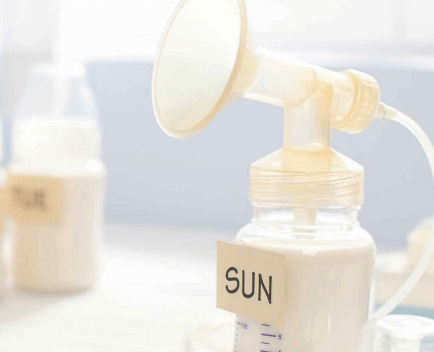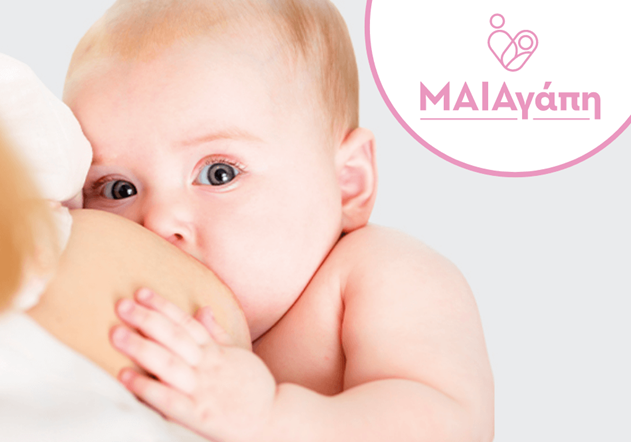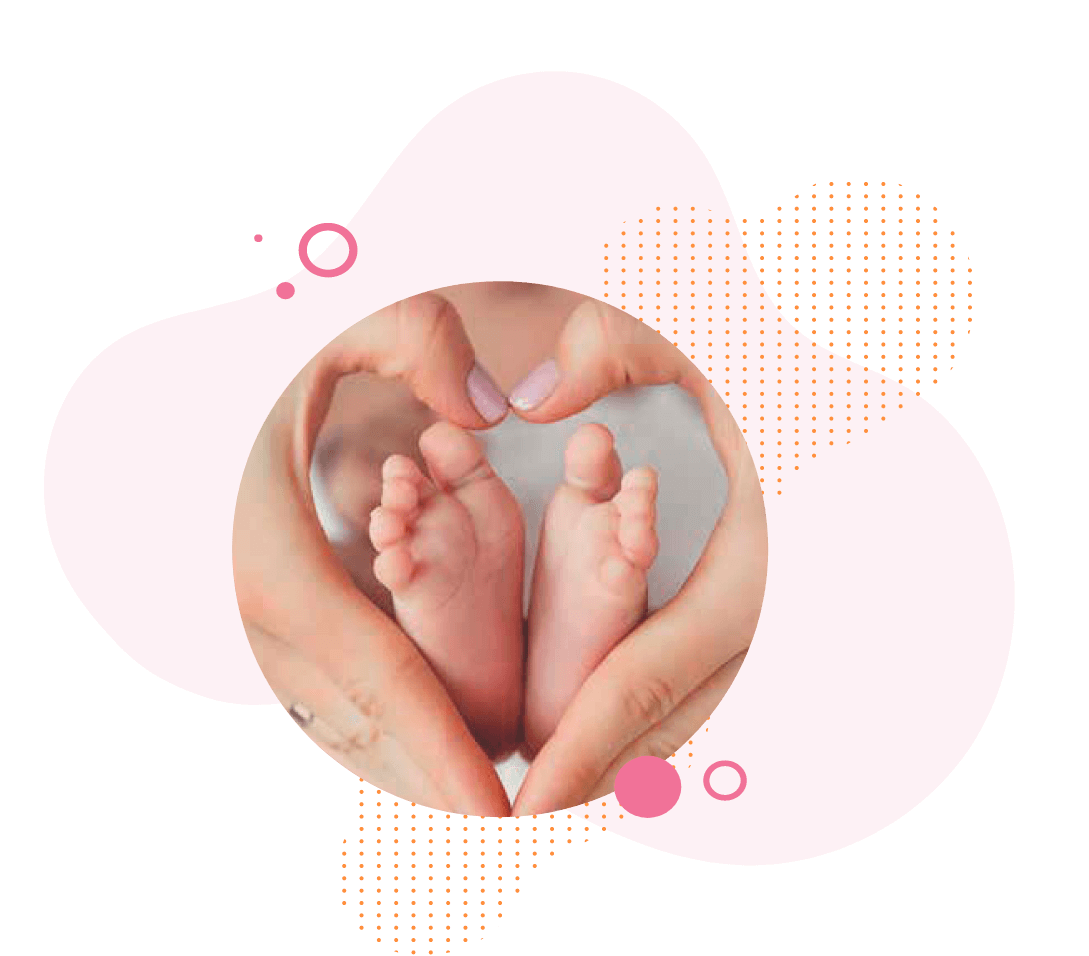Breastfeeding

Breastfeeding
The beginning of the greatest love
Breastfeeding
Benefits of Breastfeeding
What are the breastfeeding recommendations from foreign organizations (WHO and UNICEF)?
Exclusive breastfeeding is the ideal and most complete source of nutrition for the first 6 months of life. It should be continued even after the addition of solid food, up to the age of 2, or for as long as mother and child desire.
Baby-friendly Hospital
Acknowledging the value of breastfeeding, WHO and UNICEF established the Baby-friendly Hospitals initiative, proposing ten steps to successful breastfeeding.
Adopting this initiative, IASO promotes and supports breastfeeding, making an effort to apply the ten steps.
1. Having a written breastfeeding policy according to the WHO and UNICEF guidelines.
2. Training all healthcare staff systematically by organizing seminars regularly, which aim to provide the necessary knowledge and skills to implement this policy.
3. Holding daily meetings about breastfeeding with pregnant women, new mothers and their carers, so that they are informed and trained early on and correctly about the benefits and management of breastfeeding.
4. Ensuring early breastfeeding initiation, fortifying lactation and the emotional bond between mother and child.
5. Educating and offering advice to mothers, even if they have to be separated from their infants due to medical reasons, so they may maintain lactation.
6. Not giving newborns food or drink other than breast milk, unless it is medically indicated or the mother’s wish.
7. Practicing rooming-in; allowing mothers and infants to remain together 24/7, if she wishes to.
8. Encouraging breastfeeding on demand, this way accomplishing breastfeeding without any limitations.
9. Giving no pacifiers or bottles to breastfeeding infants.
10. Supporting the establishment of breastfeeding by operating a 24-hour hotline for mothers after leaving the Clinic (tel: +30 210 6184000).
Breast anatomy
The mammary gland consists of alveoli, lobes, which are made up of many lobules, and milk ducts. During pregnancy, the body prepares for milk production. The size of the breasts slowly increases. The nipple grows bigger and the areola becomes darker and bigger. Whether you are planning on breastfeeding or not, milk production starts after removal of the placenta and with the synergy of hormones.
Breast milk production
“The more frequently the baby feeds, the more milk is produced. Milk is produced during breastfeeding. Breast size is not related to milk production.”
The first days
Environment
Make sure that both you and your baby are lightly dressed. When your baby touches you, smells you, listens to your heartbeats, they feel love, affection and security, and breastfeeding becomes more effective.
Preparing for breastfeeding
Practice good hygiene and wash your hands with soap before breastfeeding. Wash your breasts with lukewarm water, avoiding soap and antiseptic, which reduce the amount of oil on the skin and dry out the breasts, resulting in stretch marks.
How often to breastfeed

- Let your baby nurse as much as they want
- On average, a newborn nurses 8-12 times every 24 hours
- During breastfeeding, your baby will stop regularly to do suckling movements. Let the baby rest, do not worry. The baby will start breastfeeding again.
How to start breastfeeding
Breastfeed your baby before crying upsets them. The first signs of hunger will guide you.
- Touch your nipple against the baby’s upper lip to encourage them to open their mouth wide.
- Once the baby opens their mouth, offer your breast.
- You need to ensure that the baby has latched on the areola and not the nipple. Bring your baby to your breast and not your breast to your baby.
- The baby may not always be able to nurse properly. In this case, gently move the baby away from your breast, sliding one finger between your breast and the corner of their mouth, and try again.
Your baby is feeding effectively when:
- You do not hurt during breastfeeding
- They make repetitive suckling movements
- Their lower lip is turned outwards
- Their chin rests on your breast
- A part of the areola protrudes from the baby's upper lip.
Breastfeeding position – Baby position

The right baby position is:
Lying on their side with their stomach at the same level as yours. Turned facing your breast and their mouth at the same level as the nipple. The tip of their nose is free and their chin rests on your breast during breastfeeding. Hold your breast underneath, while with the other hand hold your baby. Support your elbows and keep your shoulders relaxed.
Nurse your baby in a suggested breastfeeding position that makes you comfortable.
1. Cradle hold position
Classic grasp. Take the baby in your arms, resting their head on your elbow and their body on your arm. Support your breast with your hand, positioning your four fingers at the bottom, keeping your thumb at the top, above the areola. Hold your baby with your left hand, hold your breast with your right hand and vice versa.
2. Cross-cradle hold
Hold your baby's body across your arm and with your palm support your baby’s neck and head. Benefits: Natural and comfortable position, effective in most difficulties, firm grip and control of the baby’s head. It is recommended for first-time mothers.
Drawbacks: It is difficult for women who gave birth with cesarean section or had an interventional childbirth.
3. Underarm position
Hold the baby in the underarm, support their body with your forearm and their head with your hand in a position that the baby is placed at breast level. Nurse while holding your baby, sometimes under the right and sometimes under the left underarm.
4. Side-lying position
Breastfeed lying on your side on the bed, with your baby turned to their side as well. This position is recommended when you want to relax.
5. Australian hold
Hold your baby vertically facing you, while sitting comfortably.
Benefits: For older children. Controlled milk flow, ideal for children with otitis or runny nose and for babies with a small lower jaw, cleft lip and/or palate. If the mother has a lot of milk, gravity helps the baby to swallow.
Drawbacks: Tiring, not suitable for women who cannot sit.
6. Baby lying on the mother
Lie on your back with your baby lying on their stomach and their tummy touching your stomach.
Suitable for: babies who have a small lower jaw, do not latch or suckle, or when the mother has a lot of milk and the child is constantly choking.
Drawbacks: Tiring at times.
7. Twins
It is possible to achieve exclusive breastfeeding. You can even nurse them simultaneously, if you are up to it. One way is to place the babies on two pillows with their feet towards your underarm while supporting their heads with your hands. If you cannot make it, nurse one at a time, allocating one breast to each.
“A newborn nurses 8-12 times every 24 hours, for the first 2-3 weeks of their life.”
Burping
After the end of breastfeeding, keep your baby upright for a few minutes to help them burp, so that any swallowed air is released.
Nipple care
After breastfeeding you do not need to wash your breasts; apply with your fingers a few drops of breast milk on the nipples and areola and let them dry for a few minutes without a bra.
How will you know that your baby is full
- A newborn nurses 8-12 times every 24 hours
- Your breasts will feel soft after nursing
- You will change up to 6 to 8 diapers per day
- The baby who nurses effectively will regain the weight of their birth within 2 weeks. Their weight should increase steadily, monitoring it once a week.
If breast milk does not meet the baby's needs, do not rush to replace it with substitutes. Keep trying by breastfeeding your baby more frequently. The problem is usually temporary, as frequent and incessant meals settle down in the first six weeks, which is a time of adjustment for both you and your baby. Soon your baby will take control of their meals.
Breastfeeding problems
Flat/inverted nipples
Sore nipples
A large percentage of women who nurse have sore nipples. This is not because the baby stays on the breast for too long, but because of the baby’s wrong positioning, e.g. latching on the nipple and not the areola. It has been observed that women who experience great emotional stress, experience pain in their nipples.
Treatment for sore nipples
- Correct the placement and positioning of the baby on your breast and limit feeding from the sore nipple
- Gently rub your breasts while breastfeeding to facilitate the flow of milk
- Breast milk has antibacterial and healing properties, so after each feeding, rub some breast milk on your nipple and areola
- Let your breasts air dry for some minutes
- Use nipple shields, when needed
Prevention of sore nipples
- Make sure you have the right breastfeeding position, so that your baby can latch on the areola properly
- Gently move the baby away from your breast when you are in pain or when the baby is not feeding properly
- Do not use soap, alcohol or other antiseptics
- Keep your nipples dry, allowing the skin to breathe.
Breast engorgement
Mastitis
Symptoms:
High fever (39-40°C), breast pain, hot and red breasts, discomfort, tachycardia, chills, headache and joint pain.
What to do:
- Continue nursing. The infection is in the soft tissue of your breast and not the milk
- Take a hot bath before nursing
- Make sure to pump milk when your breasts feel heavy
- Track your temperature
- Contact your doctor if the symptoms do not subside.
Breast massage

Massaging in case of engorgement helps you unclog the breast and gets the milk flowing. It should be done with light, gentle movements so that the mammary gland is not strained. In addition, your hands should be well washed before the massage.
INSTRUCTIONS
1. Place your hands horizontally between the breasts and move them back and forth as shown in the picture. Repeat the same process by placing your hands vertically.
2. Hold your breast with one hand. With the fingertips of the other hand on the breast, begin to gently rub with circular movements from the bottom of the breast to the nipple, moving the fingertips 2-3 cm at a time, until the entire breast is massaged.
3. Help the milk flow by using your fingers, gently stroking the breast from the base of the areola all the way to the nipple.
4. The next step is to pump the milk. Hold your breast. Place your index finger and thumb behind the areola and press lightly towards the chest. Then lightly press the areola close to the nipple with your thumb and index, so that the milk starts flowing. Your movements should be repeated at a tolerated, steady rate. In each repetition, the position of your fingers should be changed around the areola, aiming to press a different area of your breast each time.
Nursing & feeding
Hand Expression / Pumping – Use of Breast Pump

If you use a breast pump, you must follow the manufacturer's instructions. It is essential to use the right shells for your breasts, because there are different sizes for each breast.
Alternative feeding plans
It is important to know that there are alternative feeding plans for your baby. If for any reason breastfeeding is not effective, you can follow these steps:
- Place your baby on your breast (this way, you will achieve immediate breast stimulation)
- Hand expression of breast milk or milk pumping with an electric breast pump
- Administer it with a cup, syringe or teaspoon
Milk bank
You can start collecting breast milk gradually shortly before returning to work. The person who will be taking care of your baby during your absence will be able to feed them with your own milk. The process is simple.
- All items necessary for breast milk collection (pumping bottles, plastic baby bottles and caps) must be sterilized
- Before this, they should be washed with hot water, a brush and dish soap, and rinsed thoroughly with plenty of water
- Always wash your hands and breasts well with soap and water
- Sterilization may be performed with an electric steam sterilizer or with the traditional method of boiling
- Hand expression/pumping of milk may be performed by hand or breast pump
- After the expression, collect it in sterile plastic bottles or sachets, special for safe storage of breast milk, and keep it refrigerated for 2-4 days (0 to 4°C) or in the freezer for 3-6 months (-4 to -20°C). Do not forget to label the bottles and sachets with the date of the milk collection.
- Take the milk out of the fridge and leave at room temperature for about 15 minutes. Heat it to 37°C in a pot of boiling water (bain-marie) or bottle warmer before giving it to your baby
- Thaw the milk naturally, not in a microwave. Heat it to 37°C in a pot of boiling water (bain-marie) or bottle warmer before giving to your baby
- Thawed milk cannot be refrozen
- If your thawed milk appears purulent, does not appear to be good and has a foul odor, it should not be fed to your baby.
Nutrition & more tips
Nutrition during breastfeeding
Pregnancy and breastfeeding can be an ideal reason for adopting healthy dietary habits. Meet your daily needs in albumins, fat, carbohydrates and vitamins following a healthy and balanced diet. Avoid foods with a lot of calories and without any nutritional value. Do not forget that you do not have to eat for two, but to properly meet your own energy needs. It is best to eat mostly fresh fruit and vegetables, meat, fish, eggs and cheese, and to avoid too many desserts. Drink plenty of liquids, even while breastfeeding. There is no need to undergo weight-loss diets. After breastfeeding is over, you will lose all the extra weight that you gained during pregnancy and your breasts will go back to their natural shape. It is recommended to consume caffeine in moderation. Avoid nicotine and alcohol because they contain harmful substances for the baby.
Avoid:
- Heavy food, with a strong taste and smell, because it may cause digestive disorders, both for you and your baby
- Excessive use of caffeine that may cause irritation to the baby (approximately 250mg per day are allowed)
- As far as alcohol is concerned, a glass of wine or beer is allowed after breastfeeding. Smoking is not permitted (if you smoke, try to quit or at least reduce it)
- If you need to take medication, talk to your doctor first
- Do not forget that during breastfeeding, babies acquire dietary habits because breast milk changes its composition, smell, taste and quantity depending on your dietary choices.
Other activities
- You can exercise in moderation while breastfeeding
- Make sure you sleep when your baby is asleep
- Rest and mental health are very important for breastfeeding establishment and maintenance
- Do not hesitate to ask for help and support from your partner and your loved ones; you need it.
Before you are discharged from hospital, it would be useful to know:
- When the baby wants to nurse
- How to place the baby on your breast properly and not hurt while nursing
- How to choose the most comfortable breastfeeding position for you
- When the baby is full and if the quantity is adequate
- How to extract breast milk by hand or by using a pump
- The right procedure for collecting and preserving the milk
- Some information about milk production
- When to contact the pediatrician.






